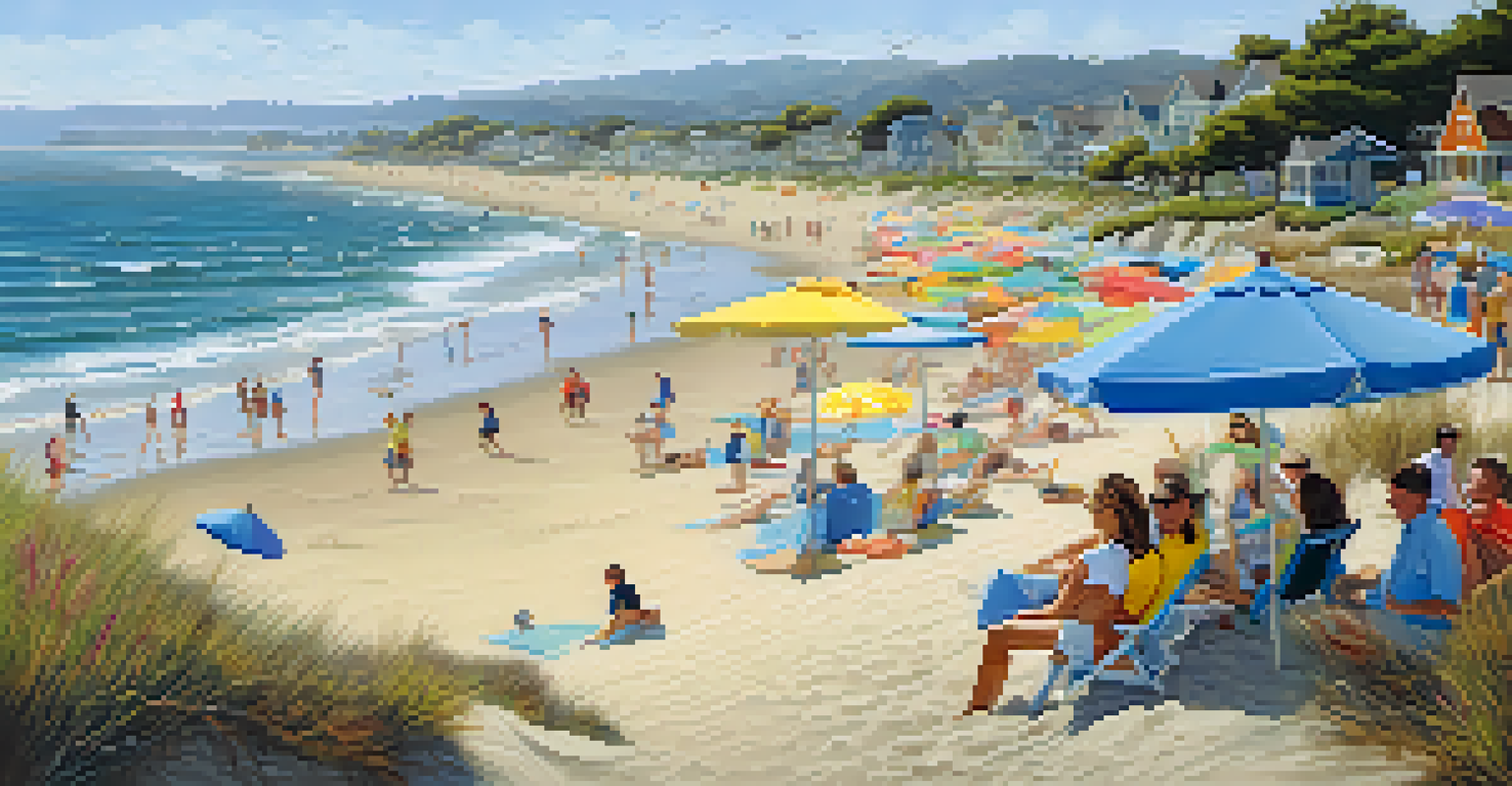Key Local Species Threatened in Los Angeles Ecosystems

The Unique Biodiversity of Los Angeles
Los Angeles is often known for its urban sprawl, but it also boasts a rich tapestry of biodiversity. Within its borders, you'll find a variety of ecosystems, including coastal areas, wetlands, and mountainous regions. These habitats are home to many species unique to the area, making conservation efforts crucial.
In every walk with nature, one receives far more than he seeks.
For instance, the Santa Monica Mountains provide a habitat for numerous plants and animals, some of which are not found anywhere else. The juxtaposition of urban and natural environments creates a fascinating yet challenging landscape for wildlife. Preserving this biodiversity is vital for the health of the entire ecosystem.
However, rapid urbanization poses significant threats to these local species. As development expands, the natural habitats that support these diverse organisms are being diminished, putting them at risk of extinction.
The San Bernardino Flying Squirrel: A Rare Resident
One of the most endangered species in the Los Angeles area is the San Bernardino flying squirrel. This nocturnal creature relies on mature forests for food and shelter, making it particularly vulnerable to habitat loss. As urban areas encroach on its territory, the flying squirrel's chances of survival dwindle.

These squirrels play a vital role in their ecosystem by aiding in seed dispersal, which helps maintain forest health. Without them, certain plant species could struggle to thrive, indicating a ripple effect throughout the ecosystem. Conservation efforts are underway to protect their habitats, but challenges remain.
Biodiversity at Risk in L.A.
Rapid urbanization threatens the unique ecosystems and species found within Los Angeles.
Community awareness and involvement are key to these efforts. By educating residents about the importance of preserving natural spaces, we can work together to ensure that species like the San Bernardino flying squirrel continue to thrive.
The Impact of Urbanization on Local Wildlife
Urbanization significantly alters the natural landscape, often leading to habitat fragmentation. This fragmentation can isolate populations of species, making it difficult for them to find mates and food. Species that once thrived in expansive habitats now find themselves confined to smaller, increasingly inadequate spaces.
The greatest threat to our planet is the belief that someone else will save it.
For example, the Western Toad, which once roamed freely in moist environments, is now facing challenges due to development around its breeding ponds. The loss of these crucial habitats can lead to population declines, threatening their survival. This situation highlights the importance of maintaining and restoring natural areas within urban settings.
Balancing urban growth with conservation efforts is not an easy task, but it is essential. Engaging the community in conservation initiatives can lead to better outcomes for local wildlife, as residents become stewards of their environment.
The Threat to Coastal Ecosystems and Species
Los Angeles' coastal ecosystems, including wetlands and sandy beaches, are under significant threat from pollution and development. These habitats are essential for various species, including the endangered California least tern. This small seabird relies on coastal areas for nesting and feeding, but habitat destruction and human interference have drastically reduced their numbers.
Coastal ecosystems also provide critical services, such as filtering pollutants and supporting marine life. Without the protection of these areas, not only do we risk losing species like the California least tern, but we also jeopardize the overall health of our coastal environment. Restoration efforts are being implemented, but they require community support to be effective.
Importance of Native Plants
Native plants are essential for supporting local wildlife and maintaining ecological balance.
Public awareness is crucial in advocating for these ecosystems. By understanding the importance of coastal habitats, residents can help push for policies that protect these vital areas from further degradation.
The Role of Native Plants in Supporting Wildlife
Native plants play a crucial role in supporting local wildlife by providing food and habitat. Many endangered species, such as the California gnatcatcher, depend on specific native plants for sustenance. As urban development continues to replace native flora with non-native species, the delicate balance of the ecosystem is disrupted.
For instance, the California gnatcatcher, a small bird, relies on coastal sage scrub for nesting and foraging. Loss of this habitat threatens its survival, highlighting the importance of preserving native plant communities. By planting native species in gardens and public spaces, residents can contribute to the restoration of these vital ecosystems.
Promoting native plants not only benefits wildlife but also enhances the beauty and resilience of local landscapes. Community gardens and native plant initiatives can help foster a deeper connection between residents and their local ecosystems.
Conservation Efforts: What’s Being Done
Conservation efforts in Los Angeles are diverse and multifaceted, aimed at addressing the various threats faced by local species. Organizations and government agencies are working together to create protected areas, restore habitats, and implement species recovery plans. These initiatives are crucial in preventing further decline of endangered species.
For example, programs focused on restoring coastal habitats aim to enhance the nesting success of endangered seabirds. Efforts such as beach clean-ups and habitat restoration projects engage the community while promoting awareness about the importance of protecting these areas. Every small action contributes to the larger conservation mission.
Community Action for Conservation
Individual and community efforts are crucial in protecting endangered species and preserving biodiversity in Los Angeles.
Community involvement is vital for the success of these conservation efforts. By participating in local initiatives, residents can help protect the unique biodiversity that makes Los Angeles special.
How You Can Help Protect Local Species
Protecting local species in Los Angeles starts with individual actions. Residents can make a difference by supporting conservation organizations, participating in local clean-up efforts, or even planting native gardens. Every effort, no matter how small, can contribute to the greater good of preserving biodiversity.
Additionally, spreading awareness about local endangered species and their habitats encourages others to take action. Engaging in discussions, sharing information on social media, and participating in community events can amplify the message of conservation. Together, we can foster a culture that prioritizes the protection of our natural environment.

Ultimately, the future of Los Angeles' unique wildlife depends on the collective efforts of its residents. By taking proactive steps, we can ensure that future generations experience the rich biodiversity that makes this city so special.